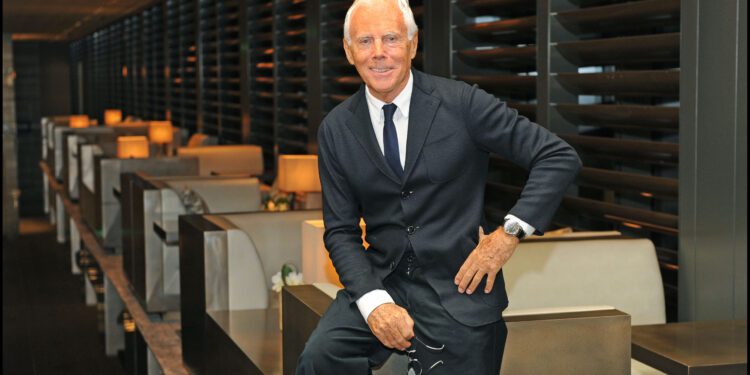Giorgio Armani, who has died at the age of 91, was the first designer since Coco Chanel to bring about a lasting change in the way people dress.
Born in a pre-war era of rigid traditions and styles, his creations followed – and helped make possible – increasing social fluidity in the latter half of the 20th Century.
Giorgio Armani was born in Piacenza, northern Italy, on 11 July 1934.
His family’s comfortable middle-class lifestyle was destroyed by the war and, with food hard to find, his earliest memory was hunger.
Armani played with unexploded artillery shells in the street, until one suddenly went off. He was severely burned and a close friend was killed.
“War,” he later said, “taught me that not everything is glamorous.”
As a young man, Armani drifted.
In 1956, he began a medicine degree – but dropped out after three years and joined the army.
Swiftly tiring of life in the military, he found a job as a window dresser at La Rinascente – a department store in Milan – where he moved swiftly through the ranks.
Most designers learn their trade as apprentices or at fashion school – but Armani’s education took place on the shop floor.
He learned what fabrics the customers liked, and went to the textile mills to buy them. He became an expert in how the cloth was constructed, and used his knowledge to perfect the tailoring.
Soon, Armani was working for Nino Cerruti – an influential haute couture designer. Within months, Cerruti asked him to restructure the company’s approach.
The 1960s middle classes could not afford haute couture, but yearned for a stylish, distinctive look of their own.
With his expertise in fabrics, Armani provided an answer. His fine cloths made possible a menswear range with neat, precise cuts that could be manufactured at scale.
Its distinctively Italian style began to influence the way the fashionable dressed.
In 1966, Armani met Sergio Galeotti, a young apprentice architect. Galeotti soon abandoned his own career and started to work at his lover’s side.
With immense confidence in Giorgio’s ability, he encouraged Armani to set up on his own.
Galeotti masterminded the business side of the company – and sold his Volkswagen car to raise seed capital.
They started small – their first office was so dingy that Armani took the shades off the lamps in order to see the fabrics. But their work was nothing short of a revolution in fashion.
In broad terms, Armani softened menswear and hardened womenswear.
“I realised that they needed a way to dress that was equivalent to that of men,” he said. “Something that would give them dignity in their work life.”
With Armani’s elegantly tailored power suits, women were offered an alternative to the stiff and stuffy dresses their mothers had worn to work. They exuded femininity, but were a powerful statement of equality.
In 1978, the company signed an agreement with clothes manufacturer GFT – which gave it the ability to produce luxury ready-to-wear clothes in volume.
At the same time, Armani pulled off a huge marketing coup.
He won a contract to dress Richard Gere in American Gigolo. In almost every scene of the 1980 film, Gere’s handsome fantasy-figure form appears head-to-foot in Armani.
In 2000, the Guggenheim Museum in New York hosted an exhibition of his work.
It recognised Armani’s powerful influence on social change in the previous century – and boldly stated that “design could be art”.
As he entered his tenth decade, Armani continued to present new ranges on the catwalks of Paris and Milan.
In March 2025, he said his Milan show aimed to pour oil on the troubled waters of global politics.
“I wanted to imagine new harmony,” he said, “because I believe that is what we all need.”
In person, he was trim and business-like.
New York magazine described him as “notoriously disciplined” and “dedicated to a self-control and self-containedness that can come off as coolness”.
Each morning, Armani would do lengths in his swimming pool. It was 50 yards long but just one yard wide – and contained just enough water to facilitate the laps.
To some, the design of the pool encapsulated the designer’s single-minded approach to life and business. It was minimalist, precise, and engineered for a purpose.
Throughout his career, his styles remained in lockstep with changing society.
The acute sense of social direction came from Armani’s early experience on the shop floor of that Milanese department store.
There, it was the customers who mattered – and a good designer ensured he adapted to their changing needs.
For 65 years, Armani dedicated himself to that task. And it amassed him a fortune estimated by Forbes at $13bn (£10bn).
“I’m never satisfied,” he once told a reporter.
“In fact, as someone who is forever dissatisfied and obsessive in his search for perfection, I never give up until I’ve achieved the results I want.”












